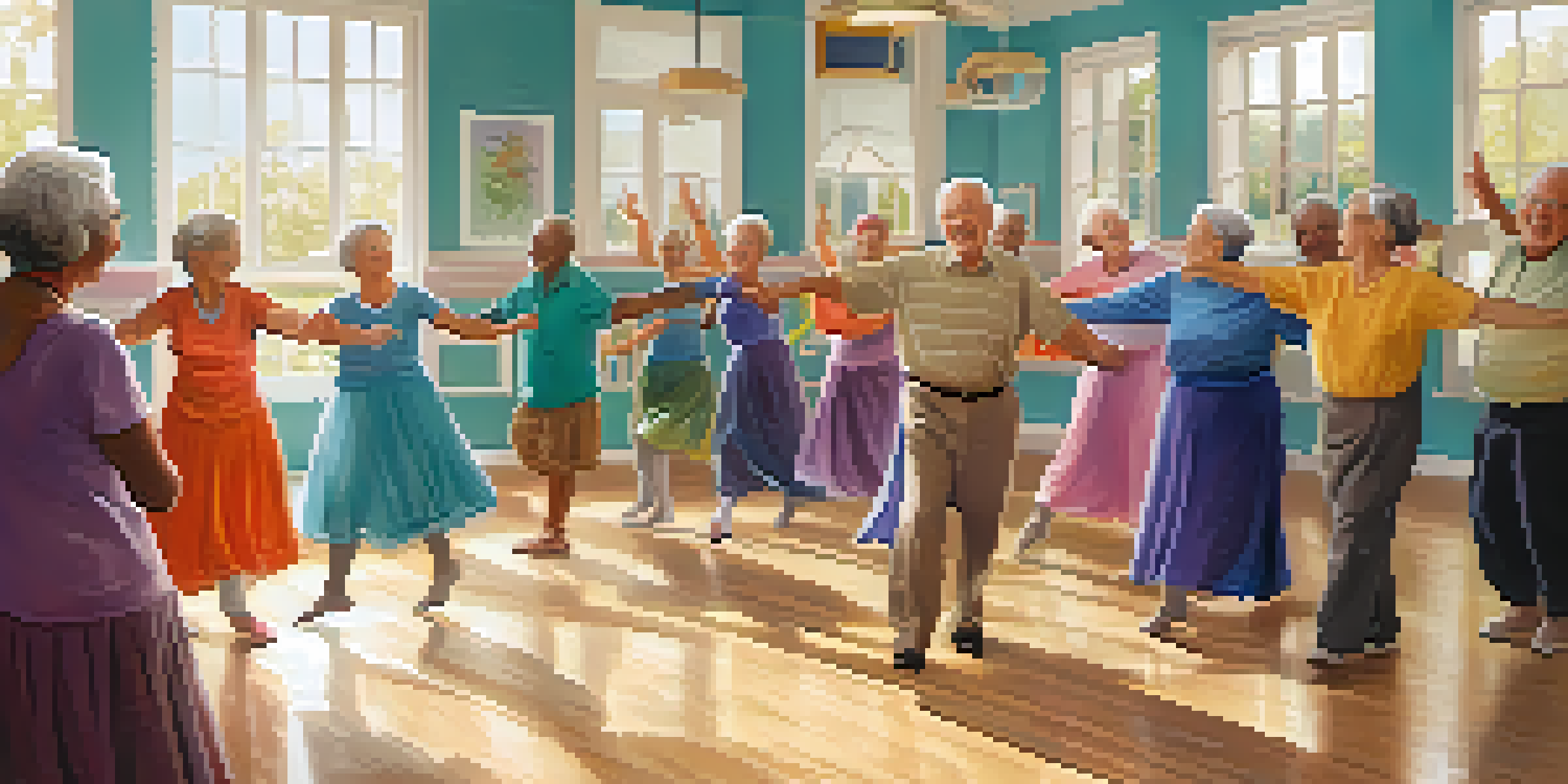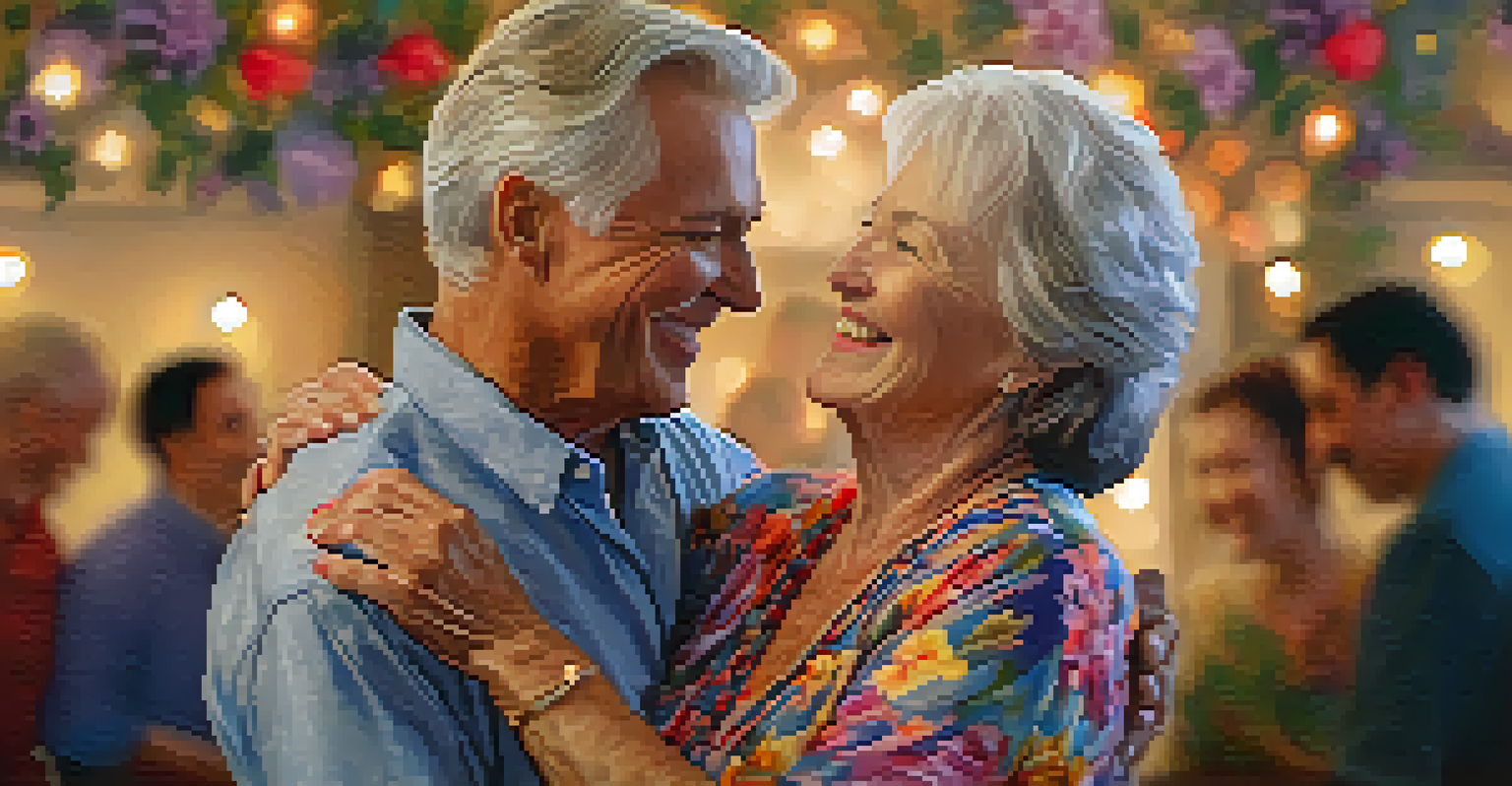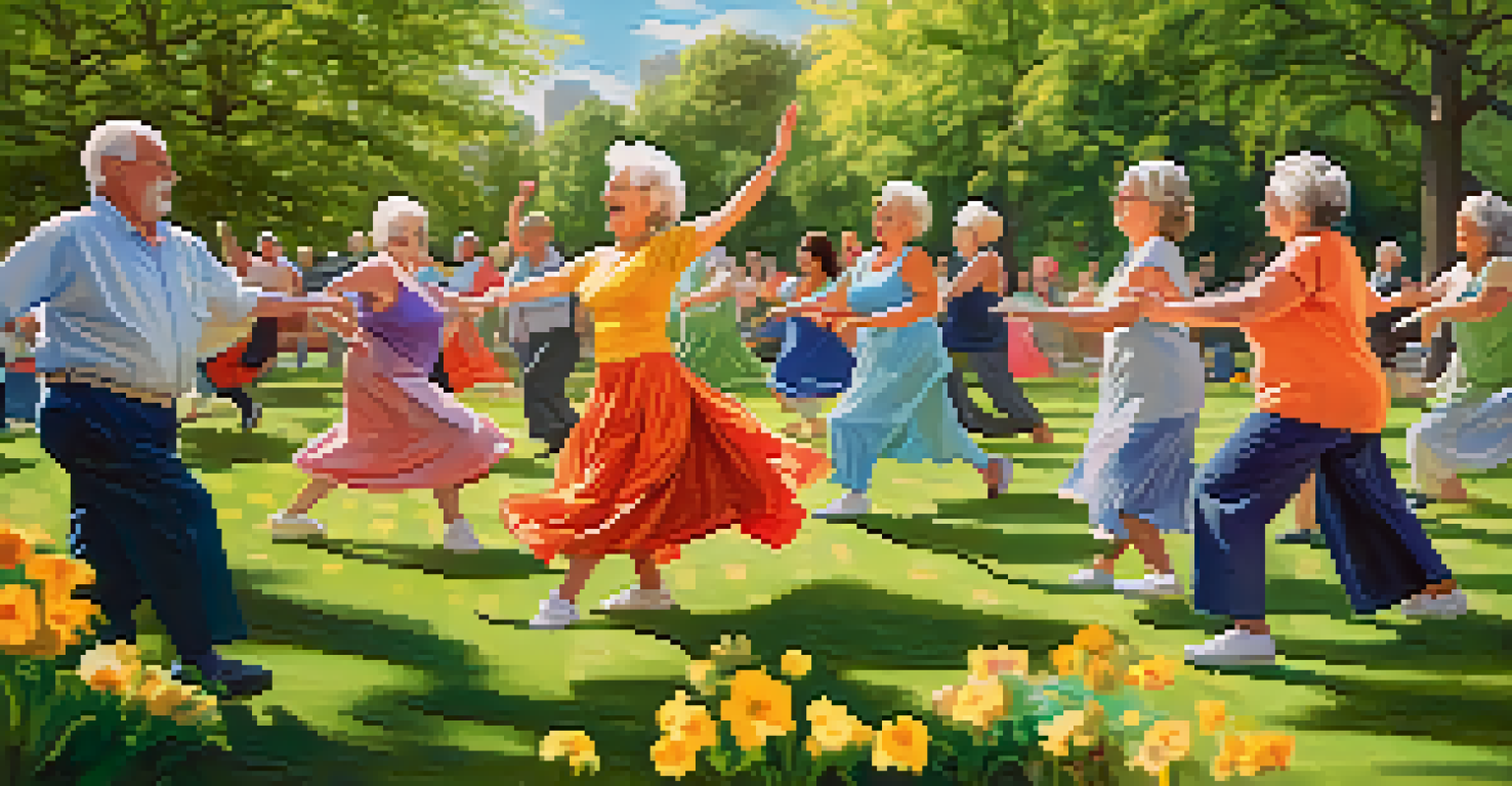Exploring Dance as a Form of Therapy for Seniors

Understanding Dance Therapy and Its Benefits
Dance therapy is a creative approach that uses movement to promote emotional, cognitive, and physical integration. It's not just about dancing; it's about expressing oneself and connecting with others. For seniors, this form of therapy can be particularly beneficial as it encourages self-expression and can alleviate feelings of isolation.
Dance is the hidden language of the soul.
Research shows that engaging in dance can boost mood and improve overall mental health. When seniors participate in dance therapy, they often experience reduced anxiety and depression. This is primarily due to the release of endorphins, which are hormones that help enhance mood and create feelings of happiness.
Additionally, dance therapy can improve physical health by enhancing flexibility, strength, and balance. These benefits are crucial for seniors who may be at risk of falls or other injuries. By incorporating dance into their routine, seniors can enjoy a fun way to stay active.
The Role of Movement in Emotional Expression
Movement is a natural way to express emotions, and dance therapy harnesses this instinct. For many seniors, verbal communication may become challenging, but movement allows for a different kind of dialogue. Through dance, they can express joy, sadness, or even nostalgia without saying a single word.

For instance, a senior might sway gently to a slow melody, conveying a sense of calm and reflection. Alternatively, upbeat music might inspire lively movements, reflecting happiness and vitality. This non-verbal form of expression can be liberating, allowing seniors to connect with their feelings in a supportive environment.
Dance Therapy Boosts Emotional Wellness
Engaging in dance therapy helps seniors express emotions and alleviate feelings of isolation through movement.
The therapeutic environment of dance also fosters connection among participants. Sharing this experience can lead to friendships and a sense of community, which are vital for emotional health. Ultimately, dance therapy creates a space where seniors can feel understood and valued.
Social Connections Through Dance Groups
Participating in dance therapy often involves group sessions, which can significantly enhance social interactions. For seniors, these connections can combat loneliness, a common issue faced in later life. Engaging with others who share similar experiences helps build bonds that can lead to lasting friendships.
To watch us dance is to hear our hearts speak.
In a dance group, seniors not only enjoy the physical activity but also share laughter and support with their peers. This sense of camaraderie can be incredibly uplifting, as they encourage one another to step out of their comfort zones. The shared experience of dance creates a unique bond that can bolster emotional well-being.
Moreover, these social interactions can stimulate cognitive functions. As seniors learn new dance steps or routines together, they engage their minds, enhancing memory and focus. This combination of physical and mental engagement makes dance therapy a holistic approach to well-being.
Physical Health Benefits of Dance Therapy
Dance therapy offers numerous physical benefits that can enhance seniors' quality of life. Regular movement helps improve flexibility, coordination, and muscle strength, essential factors for maintaining independence. As seniors engage in dance, they can often perform daily activities with greater ease and confidence.
Moreover, dance is a low-impact exercise, making it suitable for various fitness levels. Whether it’s gentle stretching or more vigorous movements, seniors can participate at their own pace. This adaptability ensures that everyone can enjoy the benefits without the risk of overexertion.
Social Interaction Enhances Well-Being
Participating in dance groups fosters social connections that combat loneliness and promote emotional health.
Additionally, the rhythmic motions of dancing can improve cardiovascular health. Increased heart rate from dancing can lead to better circulation and improved heart function. When seniors engage in dance therapy regularly, they promote overall physical health while having fun.
Cognitive Enhancement Through Dance Activities
Engaging in dance therapy can also benefit cognitive functions, which is particularly important for seniors. Learning new dance steps and routines requires focus and memory, stimulating the brain. This mental engagement can help slow cognitive decline and enhance overall mental agility.
For example, remembering sequences in a dance routine can boost memory recall and improve problem-solving skills. As seniors navigate through different movements, they activate various areas of their brains, promoting neural connections. This can lead to sharper cognitive abilities and increased mental clarity.
Furthermore, the rhythm and music involved in dance can enhance auditory processing and concentration. As seniors listen to music while dancing, they sharpen their ability to process sounds and follow beats, contributing to overall cognitive health. This makes dance therapy an enjoyable way to keep the mind active.
The Joy of Music and Movement Combined
Music plays a pivotal role in dance therapy, acting as a powerful motivator for movement. The right tunes can evoke emotions and memories, creating a rich backdrop for expression. For seniors, familiar music from their youth can spark joy and nostalgia, making the experience even more meaningful.
When participants move to music, they often feel a sense of freedom and joy that can lift their spirits. The combination of rhythm and movement can create an exhilarating experience, reminding seniors of the joy that dancing can bring. Whether it’s a classic waltz or a lively cha-cha, the music enhances the therapy.
Physical and Cognitive Health Benefits
Dance therapy improves flexibility, strength, and cognitive functions, contributing to overall physical and mental well-being.
Moreover, music encourages rhythm and coordination, which are essential elements in dance. As seniors follow the beat, they naturally improve their timing and spatial awareness. This interplay between music and movement makes dance therapy a holistic approach that nurtures both body and soul.
Finding the Right Dance Therapy Program
Choosing the right dance therapy program is crucial for maximizing its benefits. It's essential to look for programs specifically tailored for seniors, ensuring that the movements and activities are appropriate for their abilities. Many community centers and senior living facilities offer specialized classes that cater to various skill levels.
Additionally, it's beneficial to find programs led by trained professionals who understand the unique needs of seniors. These instructors can create a supportive environment that encourages participation while ensuring safety. A well-structured program will adapt to the participants' capabilities and provide a positive experience.

Finally, consider the type of dance that resonates with the seniors involved. Whether it’s ballroom, line dancing, or even modern dance, finding a style that sparks interest can enhance participation. The right program can make a world of difference, transforming dance therapy into a joyful and fulfilling experience.